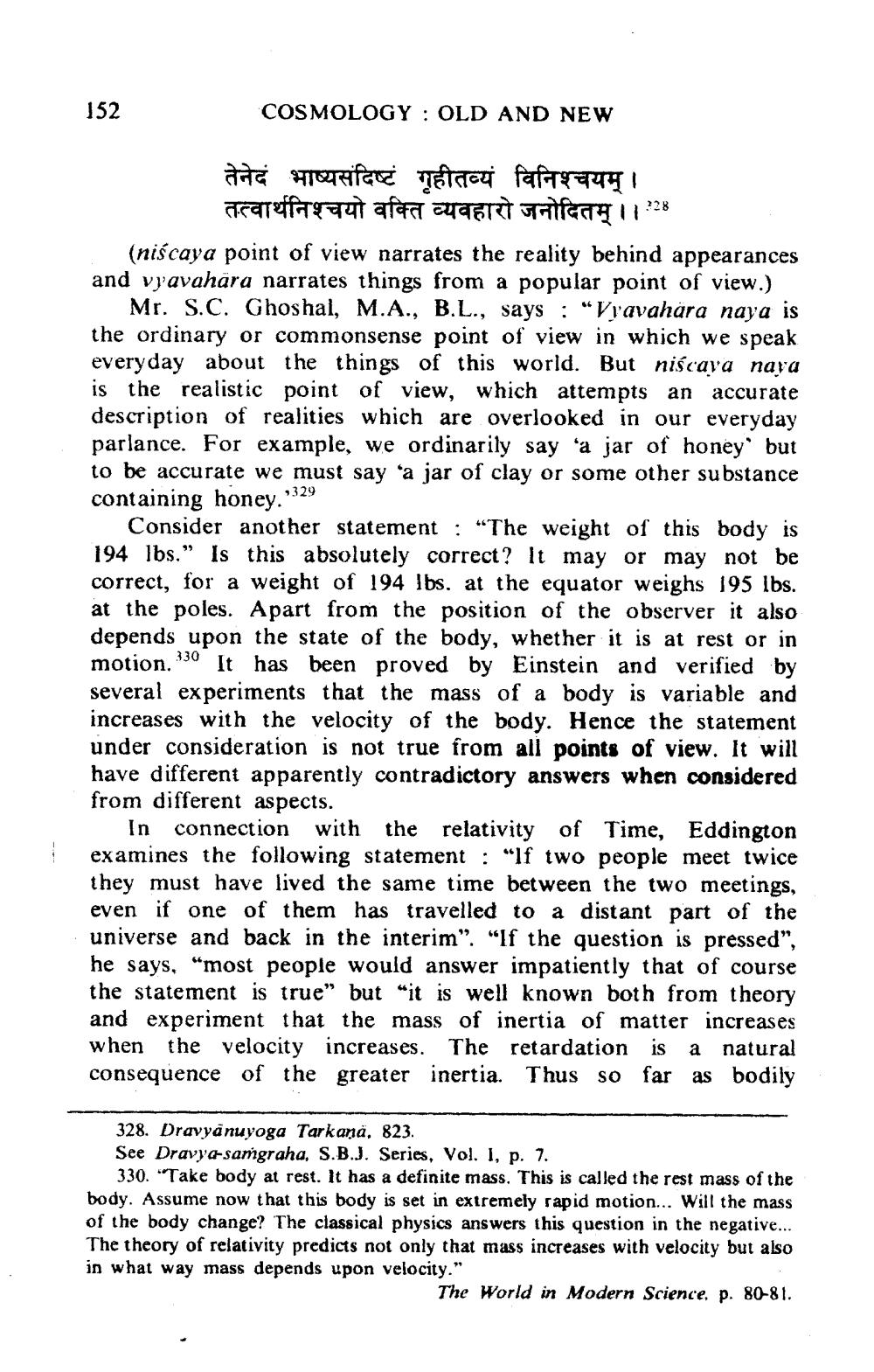________________
152
COSMOLOGY : OLD AND NEW
तेनेदं भाष्यसंदिष्टं गृहीतव्यं विनिश्चयम् ।
तत्वार्थनिश्चयो वक्ति व्यवहारो जनोदितम् ।। 28 (niscaya point of view narrates the reality behind appearances and vyavahara narrates things from a popular point of view.)
Mr. S.C. Ghoshal, M.A., B.L., says: "Vyavahara naya is the ordinary or commonsense point of view in which we speak everyday about the things of this world. But niscava nara is the realistic point of view, which attempts an accurate description of realities which are overlooked in our everyday parlance. For example, we ordinarily say 'a jar of honey but to be accurate we must say 'a jar of clay or some other substance containing honey.1329
Consider another statement : “The weight of this body is 194 lbs.” Is this absolutely correct? It may or may not be correct, for a weight of 194 lbs. at the equator weighs 195 lbs. at the poles. Apart from the position of the observer it also depends upon the state of the body, whether it is at rest or in motion."30 It has been proved by Einstein and verified by several experiments that the mass of a body is variable and increases with the velocity of the body. Hence the statement under consideration is not true from all points of view. It will have different apparently contradictory answers when considered from different aspects.
In connection with the relativity of Time, Eddington examines the following statement : "If two people meet twice they must have lived the same time between the two meetings, even if one of them has travelled to a distant part of the universe and back in the interim". "If the question is pressed", he says, “most people would answer impatiently that of course the statement is true” but “it is well known both from theory and experiment that the mass of inertia of matter increases when the velocity increases. The retardation is a natural consequence of the greater inertia. Thus so far as bodily
328. Dravyānuyoga Tarkana, 823. See Dravya-sangraha, S.B.J. Series, Vol. I, p. 7.
330. "Take body at rest. It has a definite mass. This is called the rest mass of the body. Assume now that this body is set in extremely rapid motion... Will the mass of the body change? The classical physics answers this question in the negative... The theory of relativity predicts not only that mass increases with velocity but also in what way mass depends upon velocity."
The World in Modern Science, p. 80-81.




